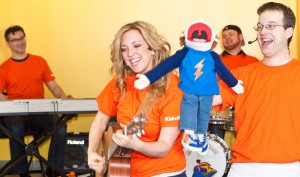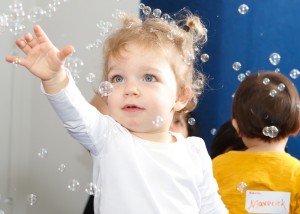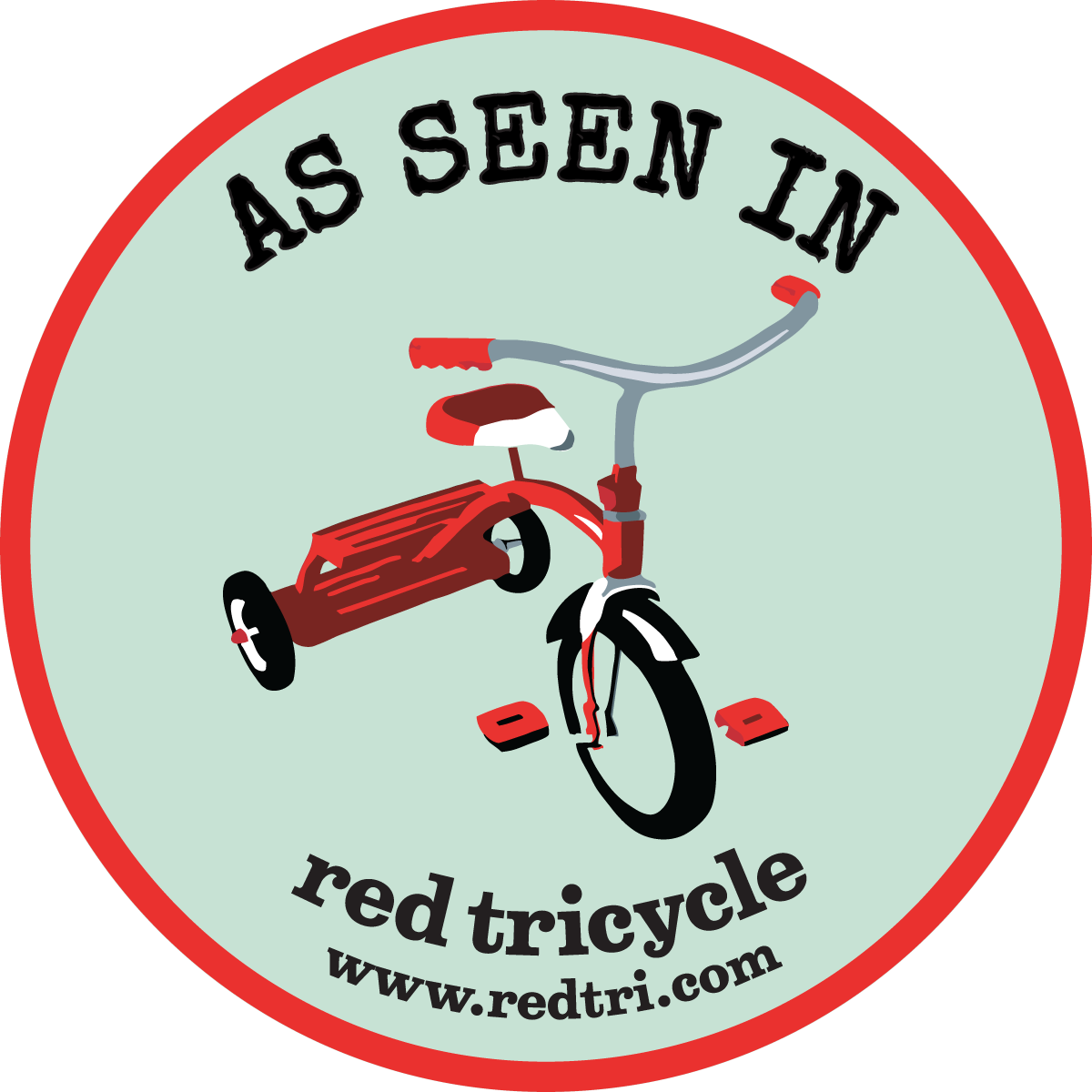In April 2011, the news of an infant’s death during a home birth in Virginia, followed by the state charging the midwife, Karen Carr, for involuntary manslaughter generated press coverage for weeks. A look at the popular DC Urban Moms forum shows a 150 page thread on this topic alone (it was the second hottest topic on the site for all of 2011) that interestingly enough, began before the news hit the mainstream media. I don’t know about you but I was taken with the story in such a way that I actually have continued to read more stories about home births with greater interest.
 Last January, new data released by the Centers for Disease Control showed that births taking place outside a hospital, while still a very small percentage of total deliveries in this country, have risen, specifically among white women age 35 and above with more than one child at home already. Births outside a hospital account for about 30,000 births and among white women, the rate has increased 36 percent, or one in every 90 births. This marks the highest increase in home birth rates since at least 1990. Between 2003 and 2006, home births increased over 35 percent in Maryland alone, one of the largest increases in a state.
Last January, new data released by the Centers for Disease Control showed that births taking place outside a hospital, while still a very small percentage of total deliveries in this country, have risen, specifically among white women age 35 and above with more than one child at home already. Births outside a hospital account for about 30,000 births and among white women, the rate has increased 36 percent, or one in every 90 births. This marks the highest increase in home birth rates since at least 1990. Between 2003 and 2006, home births increased over 35 percent in Maryland alone, one of the largest increases in a state.
From writing about this topic for Washingtonian back in 2011 when the story broke, I learned quickly from the overwhelming comments that it is a lightening rod issue. Among proponents of home birth, empowerment and intervention free are used to describe why they made their choice. Among women who choose hospital deliveries, they say it’s about risk or rather, avoiding risk with the unknown. So if it’s risk versus empowerment – where does this leave the baby – is what I sought to examine more closely. Additionally, if more women are turning to out-of-hospital births, is this pointing to a hole in women’s health care, I wondered. In this current environment of attacking women’s healthcare and women’s choices for their own bodies, I wanted to explore this topic from every angle. Along the way, I discovered quite a bit.
First, I wondered, we hear generically about midwives but who are midwives and what are their qualifications to deliver a baby? If you need a license to drive a car, to practice medicine and to be an accountant, do you need a license to deliver babies?
Unfortunately the answer is complicated, murky and inconsistent because it depends on where you live and what kind of midwife you choose for your delivery.
If you think of the landscape of midwives as a hierarchy, which my guess is the midwives would object too, but if you structure the hierarchy in terms of education, at the top of the hierarchy I am placing the Certified Nurse Midwives or CNMs. These women have gone through nursing school, have Masters degrees, are nurses and also have gone to midwifery school. They have privileges to deliver babies in some hospitals, in birthing centers and can legally deliver babies at home. Stephanie Etienne, a licensed CNM in the state of New York, who delivers babies in a hospital, spoke with me at length about the various types of midwives and explained that midwifery is a calling for some people. “Birth is something so simple and so complicated but some of those risks are not decreased by being in a hospital.” She then went on to note that “Midwifery does not equal home births,” which I think is where many people easily get confused, I certainly did.
A CNM is not who delivered the much-discussed baby in April 2011. Karen Carr, the midwife who oversaw that delivery, qualifies as the next level of midwife, the Certified Professional Midwife or CPM. This midwife undergoes training and course work to then receive her certification. To qualify as a CPM, you must have a high school diploma, finish a CPR course and attend a certain number of home births. Here is where it gets murky because though CPMs operate nationwide, only 26 states license CPMs. In our area, Virginia is the only one. In Maryland, CPMs can not legally deliver babies at home and same with the District of Columbia, where CPMs are not licensed. The State House in Maryland took up a bill this past session, HB 1056, to license CPMs in Maryland but it did not move to the Senate.
The reality is, however, that CPMs are delivering babies at home, without the state recognized license, leaving no recourse in the event that something goes terribly wrong, and no insurance coverage for the families who choose this path. By way of example, Karen Carr is a well-known Maryland midwife but she faced prosecution because she delivered the baby in Virginia without a Virginia license. Note that she is well-known despite the fact that she is operating without a state acknowledged license from Maryland.
I reached out to the Midwives Alliance of North America (MANA), the association for home birth midwives, to inquire about the differences among the states, the process for insurance coverage and how CPMs are accessing medication, including oxygen, in the event it’s necessary, if they are not operating legally, for example, in the state of Maryland. This organization is very skittish about speaking publicly to the media. Susan Moray, a press officer from MANA noted in an email response that it is an underground business and CPMs likely access medicine and oxygen to use, in the event it’s necessary, from “sympathetic colleagues.” When I questioned the patchwork of state regulations of CPMs, Susan responded: “Generally it isn’t states that fight it, but medical and nursing associations who do not understand (or feel competitive with) the profession, safety records, cost savings. They often state that women can access a midwife in the hospital, not understanding, having never attended one, the vast difference between institutional and out-of-hospital birth.” In the end, I can’t help but wonder if the state of Maryland is achieving its goal of protecting mothers and babies by not licensing CPMs because the midwives are still operating right out in the open, regardless of the law.
In my metaphorical hierarchy of midwives, there are still more layers beneath the CPMs and I have absolutely no qualms questioning their right to deliver babies without legal consequences. The Direct Entry Midwife, for example, merely has to observe births to then call herself a midwife. Again, I harken back to needing a license to drive a car or file a company’s taxes but not to deliver a baby? Only the first two layers of midwives, the CNMs and, in some states, CPMs, are legally recognized.
Moving on to exploring why there is an increase in out-of-hospital deliveries. Because this issue is so polarizing among women, the reality is this: Whether you agree with someone’s decision to deliver a baby outside a hospital or not, women have that choice. What I wanted to find out was this: If she is choosing a location beyond a hospital, what are her options in the DC area? Beyond options, what are the various outcomes that should be considered, as unpleasant as they might be, when choosing to deliver outside of a hospital.
Birthing centers give a woman an intervention-free delivery but keep her close to the technological advances made possible with a hospital. Typically CNMs work in birthing centers and often they have a relationship with an obstetrician in the event a transfer to a hospital is necessary. Unfortunately, the number of birthing centers around the beltway have dwindled. In 2007 Takoma Women’s Health Center in Takoma Park and Maternity Care in Bethesda both closed down. The Takoma Women’s Health Center had been serving the needs of women for 20 years and Maternity Care in Bethesda had been open for 25 years. Many of the women who would have previously gone to these birthing centers now use midwives who can deliver at Shady Grove Adventist hospital in Rockville.
In the entire state of Maryland, for example, there is just one birthing center, Special Beginnings, in Ann Arundel county. For a woman living say in Frederick, or even western Montgomery County, to travel to Ann Arundel county is hardly convenient or close in the event of an emergency. In the District, Family Health and Birth Center opened in Northeast DC in 2000 and is well-regarded, particularly for servicing women in a low-income area. Two midwives in the District are known for delivering babies at Washington Hospital Center, Providence Hospital and Sibley Hospital. And BirthCare & Women’s Health in Alexandria is free-standing birth center option in Northern Virginia. This particular center turned down the family who later hired Karen Carr to deliver their baby at home because the baby was in a breech position. When BirthCare opened its doors twenty years ago, it assisted about 10 deliveries monthly. Today those numbers have risen to nearly 30 births a month.
The question remains, however, if there is a rise among those who are choosing out-of-hospital births, yet birthing centers have closed down and fewer are available in a major metropolitan region, is it time to focus more on safe delivery options beyond hospitals, when no one can argue whether or not life is about to emerge into this world?
One of the most common reasons for not wanting hospital births among home birth proponents is the increasing C-section rates. In fact, Jessica Groves, a home birth advocate directed to me by MANA and President of the Maryland Friends of Midwives organization, stated clearly that “birth is a business and C-sections make money.”
To respond to this commonly held belief, I turned to Dr. Michele Hakakha, co-author of Expecting 411. She said “a hospital can’t do anything to you, your doctor has to give an order first and you always have the last say.” She went on to explain that when searching for the right doctor, the better questions to ask are to find out their philosophy on labor and delivery, inquire if you can be mobile during labor, and if you can be in a birthing position comfortable to you.
As I waded deeper into the debate about home births, I read that many believe that birth is not a medical event, therefore it doesn’t require intervention, especially among those who are low-risk. Because we all learn quickly that anything can happen in a delivery, I asked Dr. Hakakha if we can rightfully ever label ourselves low risk. She said “there is no way to predict in ‘low-risk women’ who will have a catastrophic complication and who won’t. Many don’t consider delivering a child a ‘medical procedure’ but it becomes one when things are out of the ordinary.”
Groves repeated several times, however, that midwives are trained to recognize when things are going wrong and are not afraid to tell a mother that a transfer has become necessary. She noted the transfer rate in Maryland hovers around five percent.
In terms of the argument among home birthing proponents that C-sections are all too common, what is frequently left out of this argument are the reasons why C-sections have increased in this country: the increasing age of women getting pregnant leads to higher rates of multiples and higher risk for complications during labor. Dr. Hakakha pointed out that in 1970, one in 100 women having a baby was over the age of 35. Today, it is one in seven. She explained that asking a doctor what percentage of their deliveries are C-sections is not a good question because that practitioner may deliver a lot of high-risk patients.
So how about babies? No matter where you plan to deliver, certainly everyone agrees that a successful delivery is about a healthy mother and a healthy baby. What does a pediatrician think about delivering babies at home, I wondered. Despite the skepticism out there towards obstetricians, it’s rare to hear of skepticism towards pediatricians. I turned to Dr. Ari Brown, a pediatrician who co-authored Expecting 411 with Dr. Hakakha. I asked for her perspective on home births, from the vantage point of delivering a healthy baby. “Most normal pregnancies lead to normal deliveries but there are just some unpredictable things that can happen and those situations have better outcomes in a place equipped to handle them – not just the practitioner on hand but medications, oxygen, ventilator equipment, access to an operating room for an emergency C-section,” she said. “Even in a low risk pregnancy, shoulder dystocia can happen, which means the baby’s shoulders get wedged in the birth canal and without immediate delivery, it can lead to stillbirth or brain damage. Placenta abruption happens in 1 in 150 births. In this case, the baby doesn’t get oxygen and it can lead to stillbirth or permanent brain damage. Two other risks are meconium aspiration where the fetus gets stressed in the womb and poops (meconium) before birth. That meconium is at risk for entering the lungs. Finally, cord compression or cord prolapse where the umbilical cord cannot send blood and oxygen to the fetus prior to birth as it gets stuck either from a baby’s abnormal presentation (ie. breech, transverse or shoulder dystocia), again leading to lack of oxygen and potential brain damage and death,” she explained.
Why is being close to a hospital so critical in the event something starts to go terribly wrong was my next question and Dr. Brown summed it up concisely when she remarked “it’s about the first five minutes of life because of oxygen.” Here’s where my own aversion to risk plays in, as you think about what midwives are legally allowed to administer, depending on which level midwife you choose and what state you are delivering. In Maryland and the District, CPMs are not legally permitted to carry and administer oxygen. In Virginia, they are legally permitted because they are licensed. “If a newborn is deprived of oxygen in those first critical minutes, death or permanent brain damage can occur. If you are in a location during childbirth that is not equipped for those situations, you are gambling on you and your baby’s life,” said Dr. Brown.
For mothers looking to make a choice on where to deliver and weighing the risk of infant mortality, an American Journal of Obstetrics & Gynecology analysis shows that home births result in a neonatal death rate at least twice as high as that of planned hospital births. Neonatal death occurred less than once in 1,000 hospital births, compared with two in 1,000 home births.
If we have among the most advanced technology available in hospitals and highly trained medical professionals available to deliver babies, and the facts show us that the risk for infant mortality is higher in home births, then why are more women choosing to deliver outside a hospital, particularly educated white women? Women who have the means and the access to utilize technology and scientific advancements. Women who likely have iPhones in their pockets and utilize technological advancements every day in their daily routines?
The answer can be as simple as the level of care so many have received from traditional doctors. And I understand that. After I had my first baby, as soon as she was delivered, I didn’t see the doctor who delivered her again until my six-week check up. The first time I met this particular doctor was coincidentally, days before I went into labor, because I selected a large practice with a dozen obstetricians, which meant you roll the dice with which doctor would be on call when you go into labor and it certainly didn’t afford me the opportunity to develop a personal relationship with my doctor. Recently, I experienced my first root canal and heading into it, I sarcastically wondered if it would be worse than child-birth. In the end, it turned out I had a highly infected tooth and the pain and dental visits stretched out over ten days. During that period of time, my regular dentist and my endodentist called me at home, practically every night, with sympathy and out of concern. I knew where each would be over the course of a weekend, including specifically what time one would be unavailable because his son was graduating from college. I was stunned. I kept wondering – how did I deliver not just one but two babies in this town and never once experienced anything as personal, attentive and caring as my experience with two male dentists? Could they deliver my third, should I go on to have a third child, I even wondered in a flash.
No wonder women are turned off, I thought. Specifically, no wonder educated women with the means and the resources are willing to spend time on the phone with insurance companies, learning what they will or will not cover with a midwife assisted birth and research different birthing options, because they are interested in a more personalized, intimate healthcare model based on women’s empowerment and respect for a woman’s body. Even Dr. Hakakha noted “I believe that part of the problem stems from our historically paternalistic approach to medicine. There has often been the feeling, by both doctors and patients, that the doctor decides and the patient listens, agrees and doesn’t question. I believe that women today are looking for much more. We want to be educated, active participants in our healthcare and simply sitting in a room and being told what to do isn’t good enough anymore, especially as it pertains to childbirth.”
So where does that leave the pregnant woman?
It leaves her with the privilege of options and hopefully an open mind to research where is the safest, smartest place not just for her but for her baby, when it’s time to deliver. Unfortunately if she lives in DC, it leaves her with very limited choices for birthing centers.
Like the Wired Momma Facebook page to keep up with this topic and the commentary. I look forward to hearing what others think!














